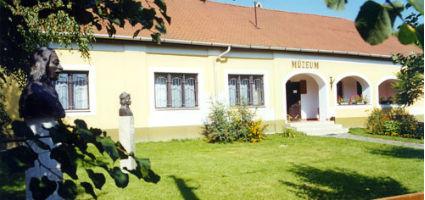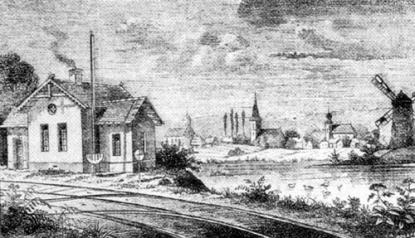2024. April 25. Thursday
Ferenc Zajti Region Historical Collection - Újfehértó
 |
Address: 4244, Újfehértó Egészségház utca 2.
Phone number: (42) 290-600
E-mail: umuzeum@enternet.hu
Opening hours: Tue-Fri 9-15
Saturdays and Sundays only for groups on prior notice |
Museum tickets, service costs:
|
Ticket for adults
|
50 HUF
|
|
|
Ticket for pensioners
|
25 HUF
|
The exhibition demonstrates the historical documents of Újfehértó and its region.

Among the archaeological findings there are stone axes (5000-3000 B.C.) and a bowl (1900-800 B.C.) representing the new stone age and the bronze age.
The centuries of the Schytians and the Celts and the iron age (from 800 B.C.) are represented by a much richer material.
Although our area did not belong to any of the big Roman provinces, many pot fractions remind us of this time. Probably they were getting to the area through exchange commerce.
folk migration's era the cooked argent tracheae's paragon avarkori argillaceous trachea deputize.
In 1912 András Jósa revealed a cemetary from the times of the Hungarian conquest (in Micskepuszta). Numerous valuable items were found in the 21 graves.
The current settlement of Újfehértó was formed in the 16th-17th centuries from the inhabitants of the medieval Bolt, Micske and Szegegyháza. The fundaments of the Árpádian church were dug out by Lajos Kiss in 1923. Some part of a medieval silver coin collection can also be seen at the exhibition.
From the time of the Rákóczi war for independence the portrait of László Rákóczi and the coat-of-arms of Mihály Nyúzó (1666-1716) are exhibited.
Újfehértó received the previlages of an agricultural town in 1836. The certificate was authenticated by king Ferdinánd I. Visitors can see a graphic appendix of the Sunday Paper published in 1866. Photographs of old and destroyed palaces and mansions are also exhibited.
Our days are represented by the certificate about the town priviliges handed over by president Árpád Göncz, and some paintings made of the settlement.

Among the archaeological findings there are stone axes (5000-3000 B.C.) and a bowl (1900-800 B.C.) representing the new stone age and the bronze age.
The centuries of the Schytians and the Celts and the iron age (from 800 B.C.) are represented by a much richer material.
Although our area did not belong to any of the big Roman provinces, many pot fractions remind us of this time. Probably they were getting to the area through exchange commerce.
folk migration's era the cooked argent tracheae's paragon avarkori argillaceous trachea deputize.
In 1912 András Jósa revealed a cemetary from the times of the Hungarian conquest (in Micskepuszta). Numerous valuable items were found in the 21 graves.
The current settlement of Újfehértó was formed in the 16th-17th centuries from the inhabitants of the medieval Bolt, Micske and Szegegyháza. The fundaments of the Árpádian church were dug out by Lajos Kiss in 1923. Some part of a medieval silver coin collection can also be seen at the exhibition.
From the time of the Rákóczi war for independence the portrait of László Rákóczi and the coat-of-arms of Mihály Nyúzó (1666-1716) are exhibited.
Újfehértó received the previlages of an agricultural town in 1836. The certificate was authenticated by king Ferdinánd I. Visitors can see a graphic appendix of the Sunday Paper published in 1866. Photographs of old and destroyed palaces and mansions are also exhibited.
Our days are represented by the certificate about the town priviliges handed over by president Árpád Göncz, and some paintings made of the settlement.
